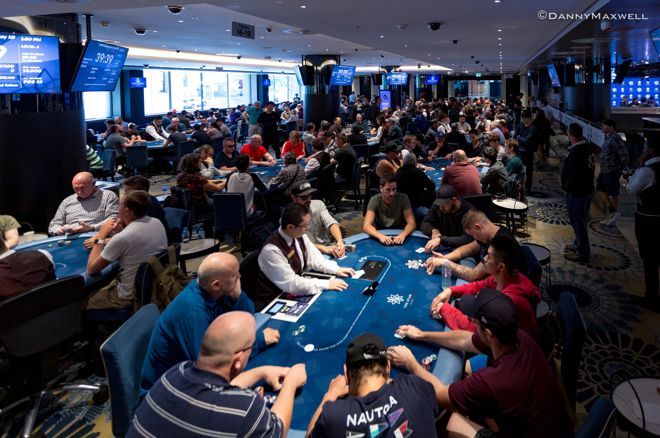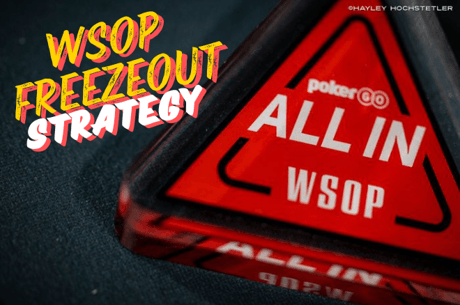Tournament Poker for the Rest of Us

Some of you may wonder why I have not written many columns recently. The answer: I have been researching and writing my new book, Tournament Poker for the Rest of Us.
��For the Rest of Us
My cash game strategy columns and books are aimed at skilled players without superstar abilities, and the same is true for my new tournament book.
I recently asked an excellent tournament pro what range he would open from under the gun during the early levels of a World Series of Poker $1,500 tourney. He said "about 35-40 percent."
Although I am a strong tournament player, there is no way I can open that wide. One reason this works for Mr. Pro because he has superior postflop skills. For the rest of us, "insert brilliance here" is a poor substitute for solid advice we can actually follow.
There are four critical pillars upon which Tournament Poker for the Rest of Us is constructed.
1. Tournament Style �� Be Active!
The impetus for my initial research was a nagging question I had: what is the best poker style for tournaments?
I had been steeped in the "Harrington Style" of tournament poker, which was based on the classic Harrington on Hold'em series of strategy books by Dan Harrington and Bill Robertie. His books teach a generally tight style until our stack gets short. I played this way for years, with moderate success. But I wondered if this was the best style.
One alternative is sometimes called the "chip up or go home" strategy. It suggests that we should play loose and aggressive from the very beginning in order to build a stack large enough to cash deep.
Both of these styles have their proponents, and rational arguments can be made for each. Indeed, there have been WSOP champions playing each style. But which style is better?
This question is answered in Chapter 4, Variance is Our Friend. I present the case for playing high-variance tournament poker. Our goal should be to be as active as possible when our stack is relatively deep. This widens our tournament bell curve, which produces more finishes in the money.
2. The Fundamental Law of Chip Utility
Unlike chips in cash games, tournament chips have no intrinsic monetary value. We can't simply get up from a tournament table, cash them in, and return the next day. Furthermore, their "value" is always shifting as the blinds and our relative stack sizes change. Instead, the value of our chips comes from their "utility."
Good synonyms for "utility" would be usefulness, power, influence or even ammo. Think of our chips as the ammo we would utilize in a video game �� we try to use our ammo as judicially as possible to win the game.
The more chip utility I have, the more of my poker skills I can employ. We have "full utility" when we can use all of the poker skills in our arsenal. I define this as 60 big blinds for a skilled player, as long as the antes have kicked in. We have "low utility" when our poker options are severely restricted, usually by providing few options for postflop play.
Consider the power a larger stack has in a tournament situation. Suppose we both have 30 BBs and I win 10 BBs from you. Now I have 40 BBs and you have only 20 BBs. I have increased my chip utility while simultaneously reducing yours.
Suppose we now find ourselves in a new hand. In a cash game we would only be playing for 20 BBs, and you can always rebuy. So losing your 20 BB stack would probably not stress you very much.
But the tournament situation is fundamentally different. A tournament player's chips are precious to him, much more so than in a cash game. I can bust you, but you can't bust me. That makes me more confident and aggressive (which is good) and tends to make you more tentative and conservative (which is bad). That provides my extra chips with extra power, extra utility, that they don't have in a cash game.
This leads to The Fundamental Law of Chip Utility:
A chip you win is worth more than a chip you lose!
This is completely opposite to what the ICM meme teaches us. And it changes the way we should look at our chip-EV decisions. Since a won chip has extra value, a negative chip-EV decision can have a positive chip utility value. This allows us to be more active, which in turn widens our bell curve and improves profitability.
3. Cash First, Win Later
You sometimes hear poker pundits say we should build a big stack early in order win, or at least to cash deep. This may be a reasonable strategy for a superstar (who may be backed), but it's a poor strategy for the rest of us.
Our tournament cashing strategy has three phases:
- Far from the bubble: we build our stack until it is large enough to cash. It doesn't matter where we finish if we don't cash, so judicious risk-taking is the rule here.
- Near the bubble: we play more conservatively to ensure a cash. This means we fold when our stack is small. But we can play power poker with our large stack as long as we don't risk our cash.
- Post-bubble: we ramp up our activity to account for the acceleration of the prize jumps. Since each pay jump is larger than the previous jump, won chips become increasingly more valuable. This means we can accept greater risk than a simple neutral chip-EV analysis can justify.
I realize this "cash first" philosophy is controversial. But the statistics are clear: taking excessive risks to build a huge stack does not return a commensurate reward.
4. Shove Early, Shove Often: The Importance of Game Theory
GTO means "Game Theory Optimal," but that does not mean a GTO shove is our optimal play. It simply means it is unexploitable by a perfect opponent. But when we make a GTO shove against a typical opponent (who nearly always calls too tightly), our GTO shove will always be +chip-EV. Therefore, it is to our benefit to always know our correct GTO shoving range.
Many pundits recommend GTO shoving only when our stack drops below 15 BBs. Some don't employ GTO strategies until our stack drops below 10 BBs. But by this point our shoving range will be quite wide and our opponents will often call our shove, especially when they have the larger stack. And when we double up, our stack is still fairly small.
Yet GTO shoving ranges can be constructed for much larger stacks. When we shove with (say) 25 BBs, we are much less likely to get called, providing us with an immediate 2.5 BB (or more) profit. Furthermore, we are shoving with a much tighter range, so our chances of winning the battle are better.
I have constructed low utility (30 BB) GTO shoving ranges we can use from every position on a full tournament table. More importantly, I have developed a method to easily determine whether our current hand is a GTO shoving hand or not.
Conclusion
This article is meant to be a brief introduction to some key concepts in my new book. I will be discussing these and other interesting topics in future articles.
Steve Selbrede is the author of six poker books, The Statistics of Poker, Beat the Donks, Donkey Poker Volume 1: Preflop, Donkey Poker Volume 2: Postflop, Donkey Poker Volume 3: Hand Reading, and Tournament Poker for the Rest of Us.









